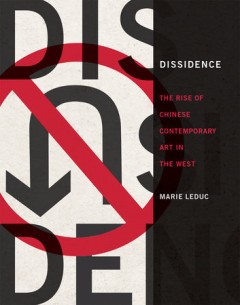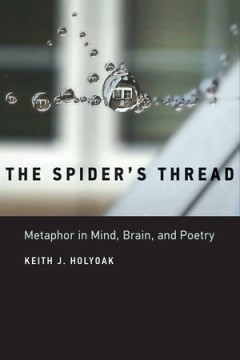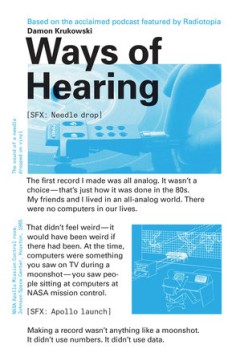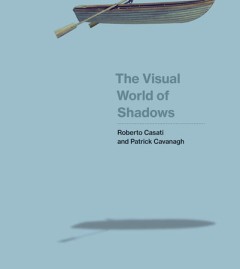Filter by

Butch Heroes
Portraits and texts recover lost queer history: the lives of people who didn't conform to gender norms, from the fifteenth through the twentieth centuries. “A serious—and seriously successful—queer history recovery project.” —Publishers Weekly Katherina Hetzeldorfer, tried “for a crime that didn't have a name” (same sex sexual relations) and sentenced to death by drowning…
- Edition
- -
- ISBN/ISSN
- 9780262349956
- Collation
- -
- Series Title
- -
- Call Number
- -

Dissidence: The Rise of Chinese Contemporary Art in the West
How the valorization of artistic and political dissidence has contributed to the rise of Chinese contemporary art in the West. Interest in Chinese contemporary art increased dramatically in the West shortly after the 1989 Tiananmen Square protests. Sparked by political sympathy and the mediatized response to the event, Western curators, critics, and art historians were quick to view the new …
- Edition
- -
- ISBN/ISSN
- 9780262348232
- Collation
- -
- Series Title
- -
- Call Number
- -

Culture Is Not Always Popular: Fifteen Years of Design Observer
A collection of writing about design from the influential, eclectic, and adventurous Design Observer. Founded in 2003, Design Observer inscribes its mission on its homepage: Writings about Design and Culture. Since its inception, the site has consistently embraced a broader, more interdisciplinary, and circumspect view of design's value in the world—one not limited by materialism, trends, …
- Edition
- -
- ISBN/ISSN
- 9780262350334
- Collation
- -
- Series Title
- -
- Call Number
- -

The Spider's Thread: Metaphor in Mind, Brain, and Poetry
An examination of metaphor in poetry as a microcosm of the human imagination—a way to understand the mechanisms of creativity. In The Spider's Thread, Keith Holyoak looks at metaphor as a microcosm of the creative imagination. Holyoak, a psychologist and poet, draws on the perspectives of thinkers from the humanities—poets, philosophers, and critics—and from the sciences—psychologist…
- Edition
- -
- ISBN/ISSN
- 9780262350822
- Collation
- -
- Series Title
- -
- Call Number
- -

Ways of Hearing
A writer-musician examines how the switch from analog to digital audio is changing our perceptions of time, space, love, money, and power. Our voices carry farther than ever before, thanks to digital media. But how are they being heard? In this book, Damon Krukowski examines how the switch from analog to digital audio is changing our perceptions of time, space, love, money, and power. In Way…
- Edition
- -
- ISBN/ISSN
- 9780262352154
- Collation
- -
- Series Title
- -
- Call Number
- -

Walter Benjamin Reimagined: A Graphic Translation of Poetry, Prose, Aphorisms…
An illuminated tour of Walter Benjamin's ideas; a graphic translation; an encyclopedia of fragments. Walter Benjamin was a man of letters, an art critic, an essayist, a translator, a philosopher, a collector, and an urban flâneur. In his writings, he ambles, samples, and explores. With Walter Benjamin Reimagined, Frances Cannon offers a visual and literary response to Benjamin's work. With de…
- Edition
- -
- ISBN/ISSN
- 9780262353564
- Collation
- -
- Series Title
- -
- Call Number
- -

The Visual World of Shadows
How the perception of shadows, studied by vision scientists and visual artists, reveals the inner workings of the visual system. In The Visual World of Shadows, Roberto Casati and Patrick Cavanagh examine how the perception of shadows, as studied by vision scientists and visual artists, reveals the inner workings of the visual system. Shadows are at once a massive problem for vision—which …
- Edition
- -
- ISBN/ISSN
- 9780262351942
- Collation
- -
- Series Title
- -
- Call Number
- -

Material Noise: Reading Theory as Artist's Book
An argument that theoretical works can signify through their materiality—their “noise,” or such nonsemantic elements as typography—as well as their semantic content. In Material Noise, Anne Royston argues that theoretical works signify through their materiality—such nonsemantic elements as typography or color—as well as their semantic content. Examining works by Jacques Derrida, …
- Edition
- -
- ISBN/ISSN
- 9780262354950
- Collation
- -
- Series Title
- -
- Call Number
- -

Good Entertainment: A Deconstruction of the Western Passion Narrative
A philosopher considers entertainment, in all its totalizing variety—infotainment, edutainment, servotainment—and traces the notion through Kant, Zen Buddhism, Heidegger, Kafka, and Rauschenberg. In Good Entertainment, Byung-Chul Han examines the notion of entertainment—its contemporary ubiquity, and its philosophical genealogy. Entertainment today, in all its totalizing variety, has a…
- Edition
- -
- ISBN/ISSN
- 9780262354547
- Collation
- -
- Series Title
- -
- Call Number
- -

Decomposed: The Political Ecology of Music
The hidden material histories of music. Music is seen as the most immaterial of the arts, and recorded music as a progress of dematerialization—an evolution from physical discs to invisible digits. In Decomposed, Kyle Devine offers another perspective. He shows that recorded music has always been a significant exploiter of both natural and human resources, and that its reliance on these reso…
- Edition
- -
- ISBN/ISSN
- 9780262355544
- Collation
- -
- Series Title
- -
- Call Number
- -
 Computer Science, Information & General Works
Computer Science, Information & General Works  Philosophy & Psychology
Philosophy & Psychology  Religion
Religion  Social Sciences
Social Sciences  Language
Language  Pure Science
Pure Science  Applied Sciences
Applied Sciences  Art & Recreation
Art & Recreation  Literature
Literature  History & Geography
History & Geography